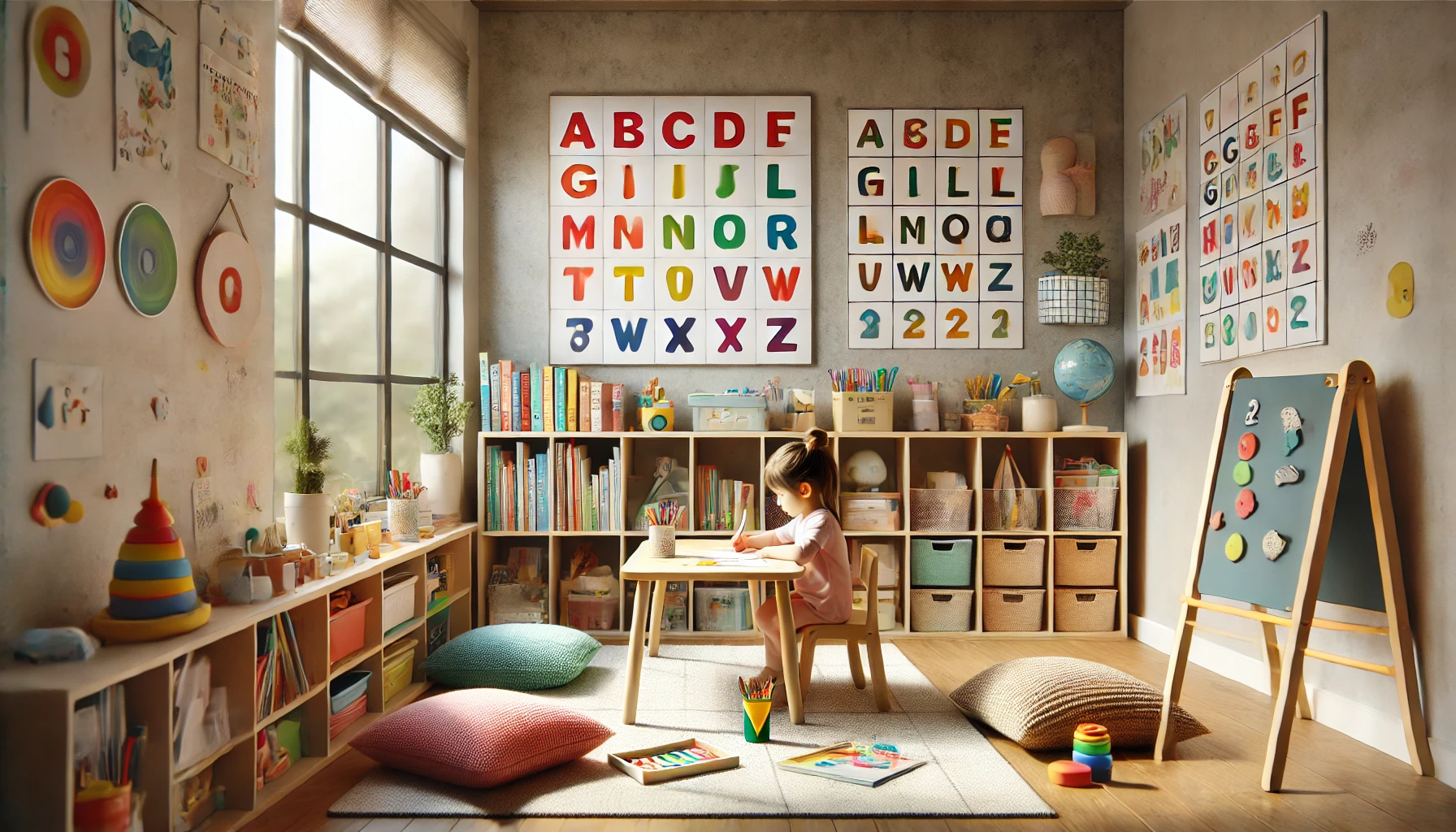A well-designed learning space at home can significantly boost a child’s focus, curiosity, and love for learning. It doesn’t have to be a full classroom or require expensive furniture — with thoughtful touches and a nurturing environment, any home can include a magical corner where learning happens naturally.
Let’s explore how to create a simple, inspiring learning corner at home for young children.
Why a Learning Corner Matters
Young children thrive on consistency and environment. A dedicated space helps them understand that there’s a time and place for learning, and it invites routine, independence, and calm. It also provides a sense of ownership — a place that belongs to them and supports their growth.
Unlike the rest of the house where play might be wild and free, a learning corner can have a quieter, focused tone — but still be warm and inviting.
Step-by-Step Guide to Setting Up a Learning Corner
1. Choose the Right Location
Pick a quiet spot with natural light. It could be in a corner of the living room, a part of the child’s bedroom, or even a shared family space that feels cozy.
Avoid placing the learning corner near the TV or high-traffic areas, as too much stimulation can be distracting.
2. Keep It Child-Friendly and Accessible
Make sure everything is within the child’s reach: books, crayons, puzzles, and activity sheets. Use small shelves or baskets to store materials. Child-sized tables and chairs make the space feel more welcoming and age-appropriate.
Even a mat on the floor with a few cushions can work if you don’t have small furniture.
3. Focus on Simplicity and Organization
Less is more. Avoid overwhelming the child with too many choices. Rotate activities every week to keep things fresh without overcrowding the space.
Use labeled boxes or pictures to help children identify where things belong. This not only supports independence but also teaches organizational skills.
4. Add Books, Always
No matter what activities you include, books are essential. Include picture books, storybooks, and even simple non-fiction books. Create a cozy little reading nook within the corner with pillows and soft lighting.
Even if your child can’t read yet, being surrounded by books helps build early literacy and a love for reading.
5. Include a Variety of Learning Tools
Depending on your child’s age, include items such as:
- Alphabet puzzles
- Counting beads
- Matching games
- Drawing and coloring supplies
- Letter tracing sheets
- Nature cards or flashcards
- Sensory items like fabric swatches or textured balls
Change them over time based on the child’s interest and developmental stage.
6. Make It Interactive and Hands-On
Children learn best through play and movement. Include materials they can manipulate: magnetic letters, building blocks, stacking toys, playdough, and textured objects. Hands-on learning improves memory and supports motor skills.
Add a mini whiteboard or chalkboard for drawing, practicing letters, or just expressing ideas freely.
7. Display Their Work
Show that you value your child’s effort. Hang up their drawings, crafts, or writing on the wall. This builds confidence and creates a sense of pride.
Create a simple “gallery wall” with strings and clothespins or use a corkboard with rotating artwork.
8. Keep It Calm and Inviting
Avoid flashy or overly bright decorations. Stick with soft colors and natural materials when possible. The space should be peaceful and nurturing — not overstimulating.
Consider adding plants or calming visuals like nature prints or animal posters.
9. Personalize the Space
Let your child help choose items for the learning corner. Ask them what color pillow they’d like, or what book should be included. When children have a say in their environment, they feel more connected to it.
You can even give the corner a name, like “My Discovery Spot” or “The Learning Nest.”
Examples of Daily Activities in the Learning Corner
To help your child get the most out of the space, try these daily routines:
- Morning Read-Aloud: Start the day with a book and some snuggles.
- Creative Time: Coloring, drawing, or building a small craft.
- Learning Play: A matching game or puzzle related to shapes, numbers, or letters.
- Quiet Time: Let them explore books or sensory items on their own.
Consistency is key. Even short sessions (15–30 minutes) can have a big impact over time.
Encouraging Independence Through Environment
One of the most beautiful things about a learning corner is how it promotes self-guided learning. When children know where materials are and how to use them, they begin taking initiative. They build confidence and a sense of responsibility.
Of course, your support and presence are still important — especially for younger kids. But a space that says, “You are capable and this is your place to explore,” lays a strong foundation for lifelong learning.
Creating Magic at Home
Your home doesn’t need to be perfect or Pinterest-worthy. What matters most is the love and thought you put into the space. Children don’t need elaborate setups — they need connection, encouragement, and the freedom to explore.
So gather a few materials, clear a little space, and start creating a learning corner today. You’ll be amazed at how this small change can transform your child’s daily experience — and spark a deeper love of learning that lasts a lifetime.
